Scarlet sage, scientific name Salvia coccinea, is an ornamental, deer-resistant, perennial prized by gardeners for its beautiful and showy bright red flower color. Salvia coccinea (also known as Texas sage) has edible leaves with mild medicinal properties.
What Are the Characteristics of Salvia Coccinea?
A member of the Lamiaceae, or mint family, Salvia coccinea is also known by regional common names, such as lady in red, tropical sage, blood sage, red sage, Texas sage and Indian fire.
In colder climates, Salvia coccinea is often grown as an annual, while in warmer climates, it may behave as a perennial.
It’s main characteristics include:
What Are You Foraging For Right Now?
We're thrilled to hear your ideas. What would you like to submit today? Feel free to share your thoughts and experiences with us.
Height:
- The plant typically reaches a height of 2 to 4 feet (60 to 120 cm).
Leaves:
- The leaves are usually lance-shaped with a serrated or toothed edge.
- They are green and may have a slightly fuzzy texture.
Flowers:
- The tubular flowers are arranged in spikes and are a striking scarlet-red color, although cultivars with variations in color may also be available.
- The flowers have a distinctive, two-lipped shape.
Blooming Period:
- The plant has a long blooming period, typically from late spring to fall.
- It produces flowers continuously throughout the growing season.
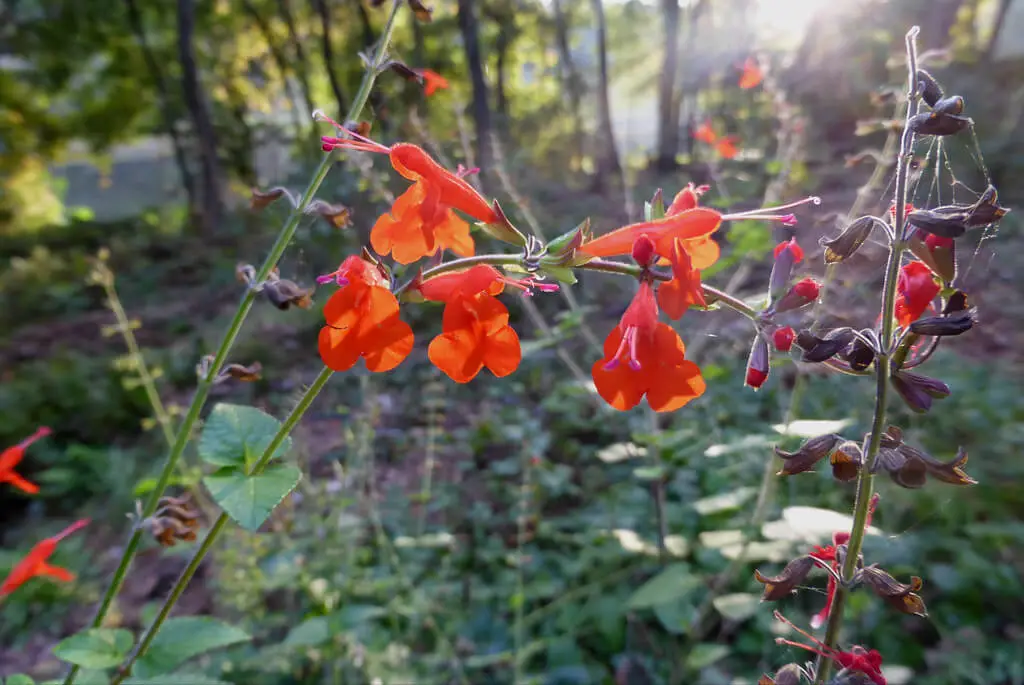
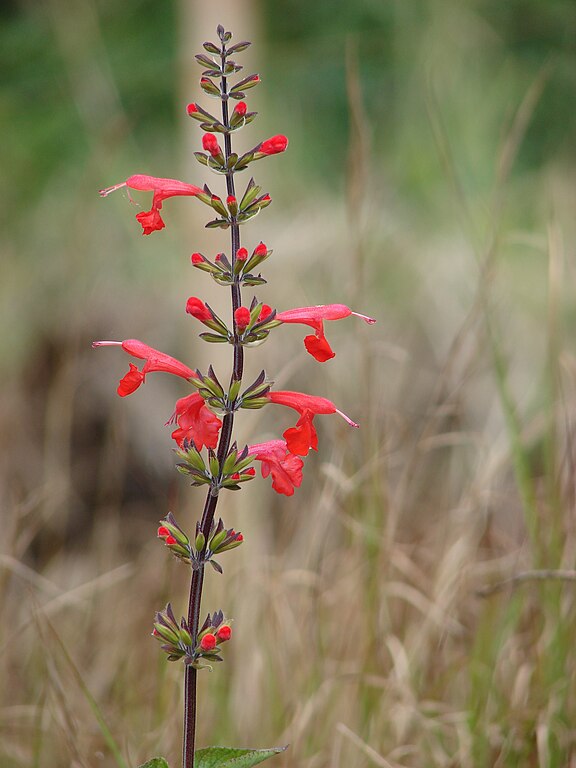
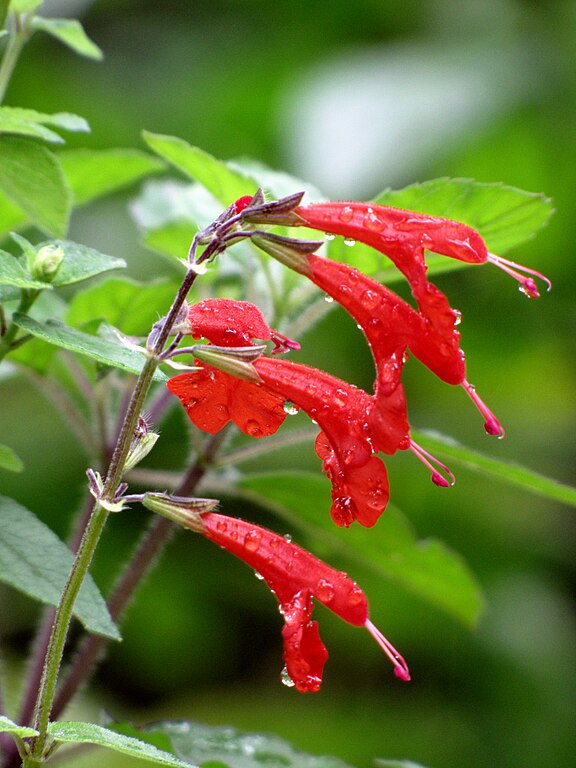
Scarlet sage is a great attractor of pollinators such as hummingbirds, butterflies, and bees.
This, along with its vibrant beauty and hardiness, make it a favorite of backyard gardeners and landscapers alike.
Check out our video below to find out all of the ways you can use scarlet sage as an ornamental plant.
Is Scarlet Sage The Same As Salvia?
Scarlet Sage (Salvia coccinea) is a member of the Salvia genus.
It’s one of over 900 salvia species, many of which are valued for their beauty, versatility, and culinary uses.
Although ‘sage’ connotes edibility and medicinal uses, sages, and salvias are actually the same thing. The name ‘salvia’ is most typically used when referring to the most highly ornamental plants in the Salvia genus.
As a matter of reference, scarlet sage can also be referred to as scarlet Salvia. Both names are considered correct and recognized as the same plant.
Can You Eat Scarlet Sage?
Salvia coccinea is generally not considered edible. While some plants in the Salvia genus have culinary uses, Salvia coccinea is primarily grown for its ornamental value in gardens rather than for consumption.
However, some foragers will tell you that the flowers can be incorporated into salads or used as a garnish. The leaves and flowers possess a mildly tangy, minty flavor
Keep in mind that it’s essential to exercise caution, as personal responsibility should guide your decisions regarding consumption.
Scarlet sage is not a danger for pets.
Make sure to check out our guides on some popular edible wildflowers, including:
Scarlet Sage Vs. Pineapple Sage
If you are foraging for edible plants and flowers, make a note of the similar appearance between scarlet sage (Salvia coccinea) whose flowers are inedible, and pineapple sage (Salvia elegans), whose flowers are edible.
An easy way to differentiate between the two is to crush a flower between your fingers.
- If it smells like pineapple, it’s Salvia elegans and can be eaten.
- If it smells herbal or like grass, it’s Salvia coccinea and the flowers should not be eaten.
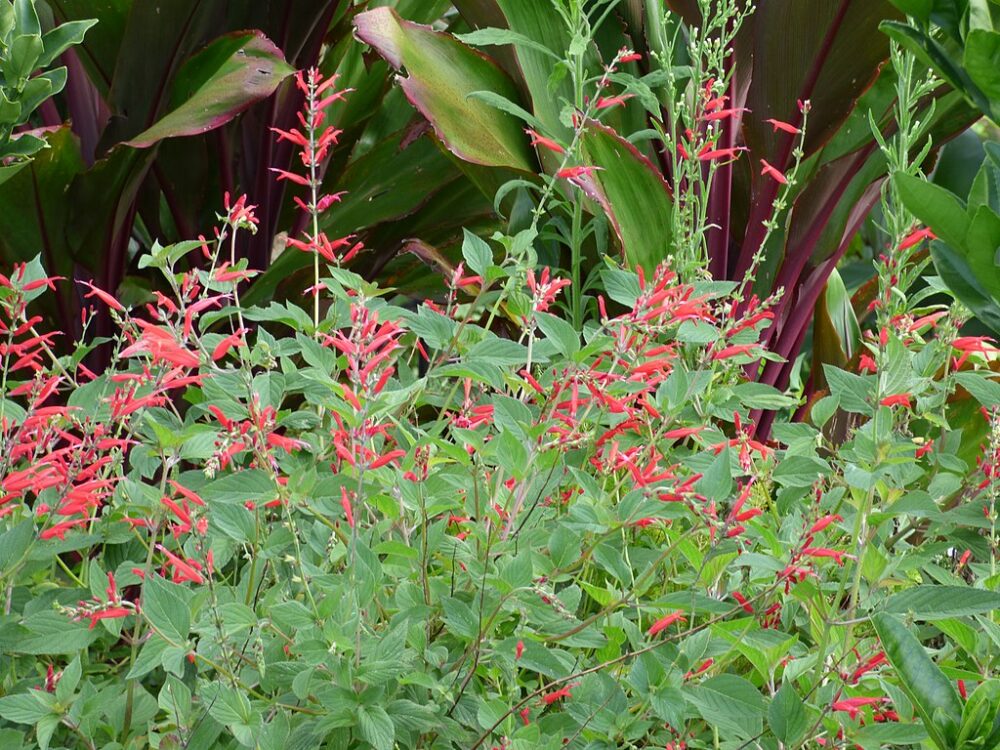
Where Does Salvia Coccinea Grow?
Although a native plant to Mexico and Brazil, scarlet sage has found a regular home in gardens across the United States and in Central America and South America.
It’s often found growing as a wildflower across the US Southeast in areas like Texas, South Carolina, Florida, and other locations along the Gulf Coast.
In other areas, scarlet sage can be used as a bedding plant to add color and interest to a garden and attract hummingbirds.
This easy-to-grow, drought-tolerant plant is at its best in warm climates with full sun with well-drained, loam or sandy soil.
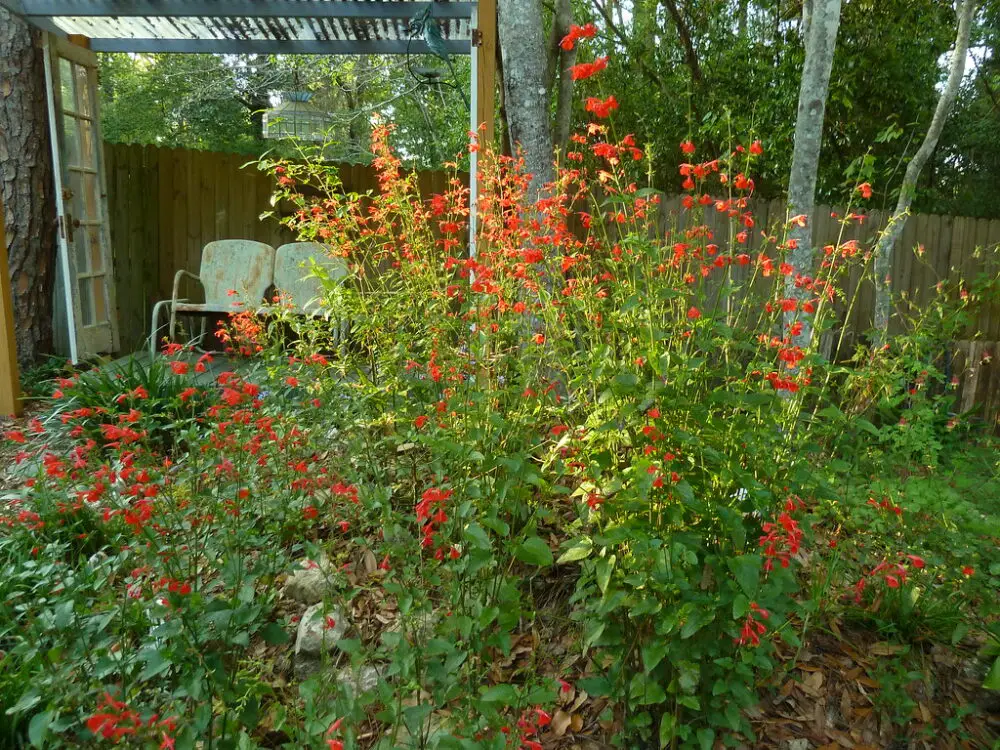
How to Grow Salvia Coccinea?
1. Selecting a Location:
- Choose a location that receives full sun to partial shade. Scarlet sage generally prefers full sun but can tolerate some shade, especially in hotter climates.
2. Soil Preparation:
- Ensure well-draining soil to prevent waterlogging. Sandy or loamy soils are ideal.
3. Planting:
- Plant seeds directly in the garden or start them indoors before the last frost. If starting indoors, transplant seedlings once the risk of frost has passed.
- Space plants about 12 to 18 inches apart, as scarlet sage can spread.
4. Watering:
- Water regularly to keep the soil consistently moist during the growing season. Once established, the plant is somewhat drought-tolerant.
5. Fertilizing:
- Fertilize sparingly, as scarlet sage doesn’t require heavy feeding.
6. Mulching:
- Apply a layer of mulch around the base to retain moisture, regulate soil temperature, and suppress weeds.
7. Pruning:
- Deadhead spent flowers to encourage continuous blooming and prevent self-seeding. Prune the plant to maintain its shape and remove any leggy growth.
8. Overwintering:
- In colder climates, scarlet sage is often grown as an annual. In warmer regions, it may behave as a perennial.
- Mulch around the base of the plant before winter to protect it in colder climates.
9. Pests and Diseases:
- Scarlet sage is generally resistant to pests and diseases.
10. Propagation:
- Scarlet Sage often self-seeds, providing new plants for the following season. Collect seeds from mature plants if you want to propagate them intentionally.
When Does Salvia Coccinea Bloom?
Salvia coccinea typically blooms from late spring to fall, producing flowers continuously throughout the growing season.
Can Salvia Coccinea Be Grown in Containers?
Yes, Salvia coccinea can be grown in containers, providing a burst of color on patios or balconies.
Is Salvia Coccinea Invasive?
While it can self-seed and spread, Salvia coccinea is not considered invasive. However, it’s essential to monitor its growth in garden settings.
Lorin is a writer, photographer and nature enthusiast in Sacramento, CA. In addition to gardening, she makes a regular practice of forging for edible plants and flowers. Nature nourishes if you know where to look.

